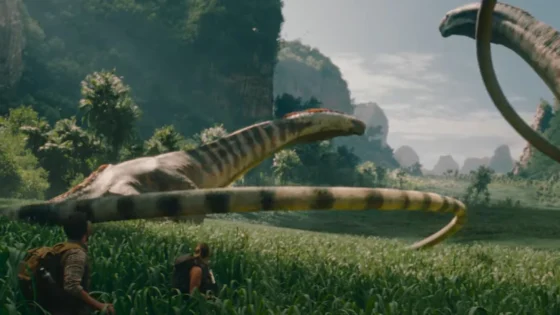Spaceship Earth is the Story of a Very Different Kind of Quarantine
The Biosphere 2 was a project in the early 1990s meant to replicate the Earth’s ecosystem within a contained sphere, in which, on the first mission, eight people spent two years living inside.
The idea of the Biosphere, which was built in the Arizona desert, was to study whether the idea could be replicated to human life settling on other planets, possibly in the aftermath of a nuclear war.
More than that, the Biosphere was a clear outgrowth of the Bay Area counterculture of the 1960s and ’70s. In a forerunner of the way the elite of Silicon Valley these days are always regulars at Burning Man, the project grew out of philanthropist Ed Bass and ecologist John P. Allen having met in the ’70s at Synergia Ranch, and the project itself often resembled a hippie commune. The project was called Biosphere 2 because the original Biosphere, they said, was the Earth.
However, the project soon ran into trouble, in terms of science, finances and public relations, and was eventually taken over by, of all people, future Trump adviser Steve Bannon. The biosphere, ultimately, did not lead to its lessons being used in space.
Spaceship Earth, a new documentary from NEON and director Matt Wolf, looks at the entire Biosphere 2 project, from its hippie roots to the complications raised once it was operational, to the eventual bitter boardroom disputes that emerged later on. The film focuses mostly on the Biosphere’s original mission, which ran from 1991 to ’93; Spaceship Earth is not to be confused with the giant dome at Epcot Center at Walt Disney World, which also goes by that name.
Wolf’s film is an eye-opening look at an ambitious project that may have fallen short, but still provided illuminating lessons about the earth, the environment, human relations, and the limits of utopian dreams. The mission took place around the time Bill Clinton assumed the presidency and it’s another example of the ’60s generation taking charge, and the mixed results that followed.
There’s plentiful use of vintage footage filmed inside the Biosphere itself, and the shots of the teams entering and exiting the complex are filmed remarkably similar to those of space shuttle launches, right down to the orange uniforms.
There’s also plenty of news footage, first focusing on the initial ambitions of the project, and later on the various minor scandals associated with it. A Biospherian who lost the tip of her finger was able to leave, and return with forbidden contraband, while there were separate controversies involving both the artificial siphoning out of Co2 and the siphoning in of oxygen. (Wolf, who also directed last year’s outstanding Recorder: The Marion Stokes Project, about a Philadelphia woman who recorded decades of TV news broadcasts, knows his way around news archives.)
By the end, the Biosphere was widely seen as a joke and boondoggle, and was even the basis of a lowbrow Pauly Shore comedy, Biodome, in 1996.
Most of the rest of Spaceship Earth consists of talking-head interviews with the Biospherians and others. Bannon, despite his usual penchant for never avoiding an opportunity to appear on camera, did not participate in the documentary, although one participant is moved almost to tears by the observation that Bannon’s involvement in the Biosphere means he almost certainly knows that climate change is real.
A January Sundance debut that’s arriving simultaneously on VOD and Hulu, Spaceship Earth is a timely arrival: It’s the story of a very different kind of quarantine, about a small group of people stuck together in a confined space for a long time.

































